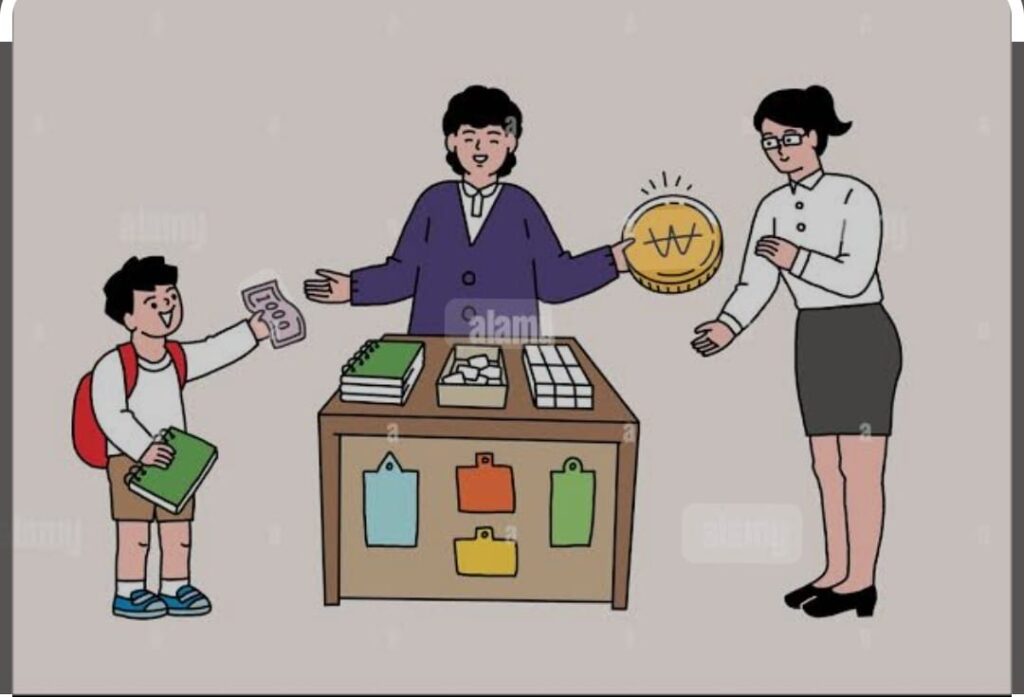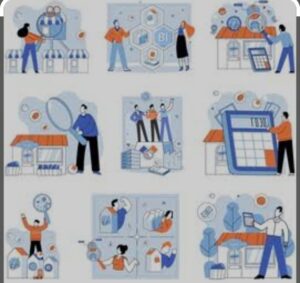The Story of Palampur and People as Recourses
The Story of Palampur and People as Resources are the Economics chapters of class 9th which covers the detail study to create the clear understanding to the students
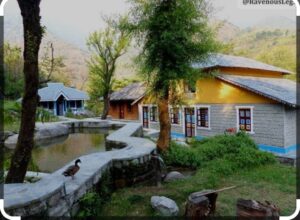
THE STORY OF VILLAGE PLAMPUR : In the story of Palampur the village of Palampur are imaginary and all subject are taken as assumption
i) The Land Distribution :
There are 15 families who are landless , 240families have small lands , 60 families are medium class farmers and few farmers are large farmers
ii) The Factors of Production in Palampur are Land , Labour , capital which is in fixed and human capital working in which big farmers give lands to small and landless labours
.They give land also to work on landless labourers work on daily wages
iii)Farming is the main activity of Palampur , Dairy , shopkeeping ,Transport services , small manufacturing units are the main source of economic activities .
The main products are sold in Raiganj and some are kept for self consumption and money earned is used further in business . Palampur has well connected roads to neighboring villages and towns .
It has two primary schools , one high schools . There is one government Primary HealthCenters and one private dispensary.
The farmers of Palampur use modern methods of Farming while they use HYV seeds ,Fertilizers Pesticides , modern irrigation facilities’ to achieve motive of Green Revolution.
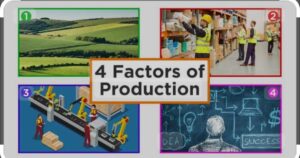
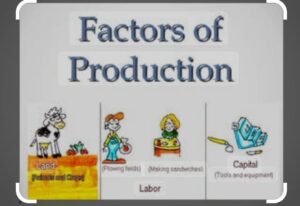
FACTORS OF PRODUCTION in The Story Of Palampur
a) Land which includes natural resources such as water, forest and minerals
b) Labour are those people who work for the development of the economy
c) Capital are used of two types
i ) Fixed capital which includes machines, building and tools
ii)Working capital which includes raw material and cash in hands
d) Human Capital which means knowledge and enterprise include skills and education.
Agriculture in the story of Palampur :The agriculture crop year in India is from July to June. Agriculture seasons are classified into three cropping seasons
a) Rainy Seasons /Kharif from July to October main crops sown are Jowar, bajra , rice , maize , cotton , tobacco
b) Winter Season /Rabi
c) Summer season/ Zaid March – June crops in this are watermelon, Toris , cucumber , leafy vegetables and flowers
MULTIPLE CROPPING is the practice of growing more than one crop on the same piece of land during one crop year.
Agriculture practices carried out in India from acient period ,Traditional Farming adheres to the traditional method of agriculture .
On the other hand ,modern farming experiments with the implementation of the advanced technology .
The basic difference between traditional Agriculture practices carried out in India from ancient period ,
Traditional Farming adheres to the traditional and modern farming is the technology . The standard method of measuring land is hectare that is one hectare = 10000 sq metre
DIFFERENCE BETWEEN TRADITIONAL FARMING AND MODERN FARMING in The Story Of Palampur
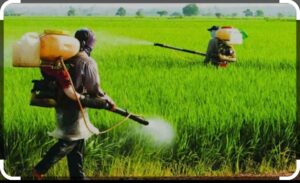
Traditional Farming mostly labour intensive are workers from the family , traditional seeds are sown ,in the name of fertilizers cow dung and other natural manure are used, ploughing is done by animals and bullocks harvesting is done manually.
Persian wheels were used by farmers to draw water from wells , canals and mostly depends on rainfall capital needed is very less it comes under subsistence farming
In the Modern Farming Labour are hired , farmers use HYV seeds , Chemical fertilizers and pesticides are used , Costly machinery, tractors and threshers.
Tube wells , pumps sets canals ,dams tanks are used for irrigation as modern technology is used which is capital intensive more capital is needed
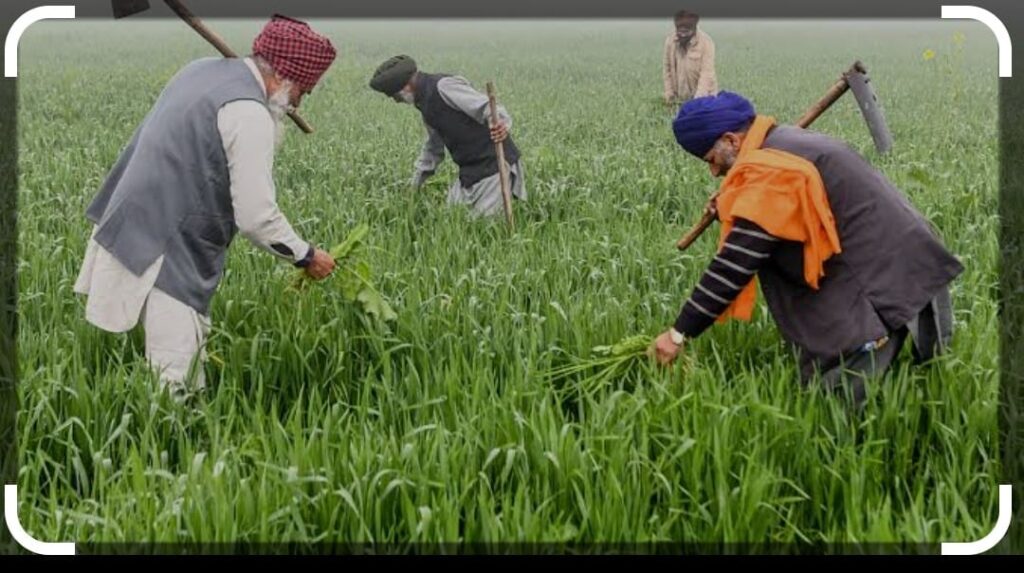
GREEN REVOLUTION ; There was great increase in the production of wheat and rice in India in 1960 is called Green Revolution .
It could happen owing to the introduction of modern farming by use of HYV seeds , use of fertilizers and Pesticides along with modern methods of irrigation techniques such as tube wells , and modern farming machinery
Due to Green Revolution there was increase in Agricultural production, which also increase the employment opportunities, created the strong bonding between agriculture and industry and farmers became market oriented
Green revolution also produce negative impact on agriculture land by loss of fertility , use of more water causes depletion of water table , green revolution was confined to limted aera such as Punjab and western UP which created the regional economic disparities among the farmers and also created inter personal inequalities
PEOPLE AS RESOURCE
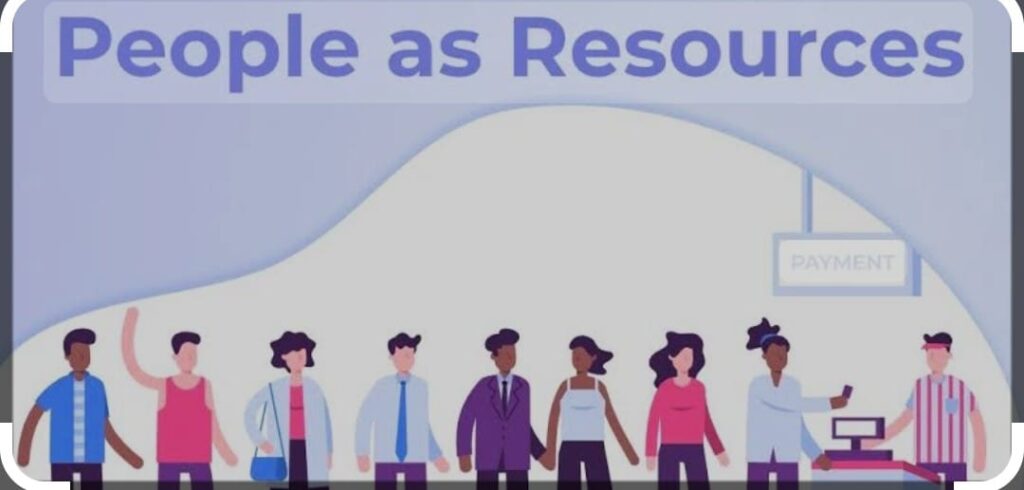
They are the human resource which is called workable population an asset for the economy rather than a liability therefore known as human capital when there is investment made in the form of education, training and medical care
,It is the stock of human skill and productive knowledge embodied in them. This is one way superior to other resources like land, physical capital they cannot become useful unless utilized fruitfully by the skill of human beings.
| People as resource a perforce can be said those who have productive skills and abilities of a country’s working class .
The population who has an ability to contribute to the creation of the gross national product (GNP) with the help of their education, Skill , Training and good health sour |
||||||||||||||||||||||
| Human beings perform many function which can be grouped into Economic and Non – Economic activities. Education and Skill are the major determinant of earning of any individual in the market .
Population becomes the human capital when the investment made in the form of education , training and medical care as Japan did not have natural resources made it developed and wealthy country ECONOMIC ACTIVITIES in People as Resources are classified into
a) Market Activities which refer to those activities of man/ woman which are undertaken for a monetary gain to satisfy his/her needs
b)Non – Economic Activities are ones that are not undertaken for any monetary gain . These are also called unpaid activities for example Puja in one’s home , housekeeping, helping the poor cooking food for the family . IMPOTRANCE OF EDUCATION ;The quality of population depends upon the literacy rate, life expectancy and skills formation acquired by the people of the country . Education is the most important component of human resource development. a) It helps individual to make better use of economic opportunities available before him b)It contributes towards the growth of society and also enhances the national income, cultural richness and efficiency of the governance c) Measures like SARVA SIKSHA ABHIYAN (SSA) MID DAY MEAL SCHEME (MDM) and RIGHT to EDUCATION ACT (RTE) have been introduced to push education at the farthest end
HEALTH is another very important component of human resource development. Efficiency of workers largely de[ends on their health.
|
Added: |
| Added: |
